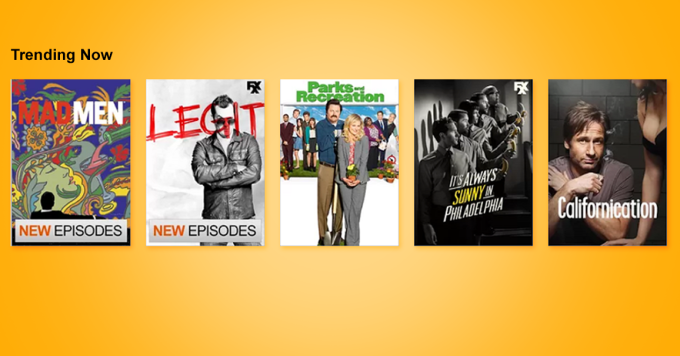AI stunts Advertisement and Graphic Designing
AI GIVES MARKETERS AND BRANDS SUPERPOWERS, WHICH CAN BE USED FOR GOOD OR EVIL!

Related Statistics
- CMOs most prioritize AI spending areas are Content personalization and predictive analytics- The CMO study discovered that the top user of AI for content personalization (62.2%) are B2B service providers whereas, B2B product companies prefer using AI for AR & VR, visual search, and facial recognition. Source: CMOs’ Top Uses For AI: Personalization and Predictive Analytics. Marketing Charts. March 14, 2019
- 82% of marketers are adopting AI to provide the best customer experience. The timely delivery of content, offers, and other relevant experiences stand second (67%), and performance metrics are third at 57%. Source: Leading reasons to use AI for market personalization as per industry professionals, 2018, Statista
- 81% of marketers believe in spending audience targeting using AI in upcoming years. 80% are already hanging on AI for audience segmentation. EConsultancy’s study found that most marketers are in favor to adopt AI as per its potential to boost marketing and track the growth of the business. Source: Dream vs. Reality: The State of Consumer First and Omnichannel Marketing. EConsultancy
Prelude
In this astonishingly growing world of tech, it’s getting even more challenging to hold peeps’ attention. We’re on 24-hour news shelling, social media platforms trying to retain us anyway, and the barrage of email and messages that seem never-ending. With all this fanfare, it’s a near wonder that companies can get their words across and convincingly communicate their offerings to potential customers.
AI in my opinion is an 'IF THIS-THEN THIS' kind of scenario. It helps the world systems and its recruiters to become smart enough to recognize the preferences and choices people are going to make. Other than that it is only a 'machine learning- sequence of data you store in a computer or a machine to perform the task.

The Nuance of AI
No matter you like it or not, Artificial Intelligence calls for great business ventures!
AI tech or Human competitive machines are reshaping industries from finance to healthcare to retail. In such industries, AI tools are dramatically shifting the course of operating tasks, providing unprecedented revenue breaks, and significantly cutting costs.
Some common AI technologies are all ears such as machine learning, computer vision, natural language generation, deep learning, natural language processing, neural networks, and speech recognition. There are gobs of others, too.
That’s where AI tech beat the traditional software because of such architect design and variety in performing massive tasks.

Penumbra of AI in Advertisement & Graphics
In Advertisement Case:
- AI has influenced advertising and the surrounding landscape. Advertisers and marketers want to optimize the large data at their disposal to provide the best campaigns and drive more impact.
- Thus the importance of AI in advertising continues to lift a collar. Before the assistance of AI, it was tricky to gauge the effectiveness of campaigns and where to allocate capital.
- However, media spend is not the only sector of the advertising business being hit. AI affects planning, analytics, and creativity. Hence, other factors are also engaged in how advertising budgets are acquired and spent.

In Graphic Design Case:
- AI provided footholds for designers to create images that are impossible for them to create before. These images are invented by analyzing the users and then designed logos.
- AI even prepared complete layouts for a website via the relevance of different objects with the help of their cognitive abilities.
- The AI-powered systems also enhanced the categorization of the websites with the best color combinations, settings, font styles, and overall design.
Impact of AI on Advertising
AI can force a competitive edge to advertising campaigns through enriched user experiences and reduction in human error. The potential benefits are evident, and businesses are prevailing over this.
The best reasons why industries are increasing spending on AI in an advertisement are:
Break down of AI investments: Organizations invested on average more than $38 million in AI in 2019, which amounted to about 0.75% of revenue. About one-third of companies invested more than $50 million in 2019. AI could contribute up to $15.7 trillion to the global economy up to 2030, far above the current output of China and India combined.

1. Better ROI Effects
Advertisers and marketers have struggled before to determine the status of their campaigns and the actions needed to acquire their results. If we leverage analytics, the companies can establish what is most effective.
Besides, by targeting the best audiences with inch-perfect messaging, your team can bunk advertising waste and improve marketing ROI.
2. Hyper-Personalization Experience
As per Forrester.com, 80% of US customers like to trade with personal information for a hyper-personalized approach from retailers.
Personalization allows businesses to build relationships with consumers over touchpoints. Whether it be using conversational marketing or optimizing creative messaging to connect with audiences.
Your team can benefit from risen brand loyalty and best-fitted advertisements.
3. Cost-Savvy
Automated tasks via AI that are ‘set-and-forget’ free fall investments and resources that marketers could use in strategic objectives. The entire unit can become more productive and dynamic.
Companies can dump trash that occurs naturally as the result of mass marketing by customizing any offer to the minimum amount to influence purchasing options.
Impact on the Other Twin- A Graphic Designing
The impact of Artificial Intelligence (AI) is like a hammer of a Thor for the design industry in recent years. Artificial Intelligence has been influencing almost every business worldwide, graphic designers fall into no different class.
From automated packaging of the products, conversion of Big Data into secret codes to perform, AI has the idiosyncratic potential to hit the system of graphic design in an unprecedented way, hitherto not experienced.
However, this machine intelligence is still often unknown in the field of graphic designing such as how it will perform and change the gears for expert designers.

AI serves the most powerful and robust design systems which include a blended flow of modules, patterns, and elements to build a brand’s design language. Thus, it’s also called a designer’s bosom buddy.
The inclusion of AI in the designing system helps us to:
1. Improve User Experience
Smart user experience is the least spotted angle but turning out to be a new norm for the graphic industry. Like Facebook, which uses AI to show the content of the photo to visually impaired readers and also reveal relevant advertising tactics.
Google Lens by Google, one of the revolutionize AI-powered systems is an optical search technology whose AI elements can detect and display the content in which your camera has been positioned.
2. Create Dynamic Visuals
AI embedded in tools like Prisma or Artisto helps to identify the images’ content efficiently and also applies smart face tech to evoke the best visual effects.
There’s an entire cluster of apps with procreative and dynamic visual styles to augment the designer’s capabilities. Let’s take Auto Draw– another automated visual component app. It helps the user to fine-tune their sketches into fresh and polished forms.
As per the AI experts, the more a designer adopts machine learning tools for drafting sketches, the more smartly AI knows what the users are trying to draw.
3. Build Modular Design Systems
Website such as Squarespace and Wix have integrated AI tech into their workflow to help designers with mundane design decisions.
AI set up more powerful and robust design systems for the designers. The system includes a flow of modules, patterns, and elements to sketch a brand’s design language.
Let’s now take one more e.g. of an app Tailor Brands. A spellbinding service that can create a logo and brand with 100% ease and speed. You can create a logo for your brand in seconds after going through a few quizzing.
Algorithm-built logos get on with diverse colors and elegant themes are also commonly used branding and AI trends.
Real-World Examples for Advertisement & Graphics
“The future of marketing is about the future of experiences.”

According to one of the world’s finest Futurists, Thomas Frey, over 2 billion jobs will disappear by 2030 (nearly half of all jobs on the planet) due to technological boost.
Graphic Designing case in point
The design industry experts predict that only 8% of graphic design jobs, can be overlaid by an automated system.
Here are some fresh cases of AI in Graphic Designing:
- Adobe’s Sensei software uses AI to accelerate methods like filtering through stock photos, editing facial features excluding distortion, and loosen jump cuts during video interviews.
- Websites like Squarespace, Wix, and The Grid capitalize AI to build sites inessential of graphic designers. Users can upload images and text, then follow a library of color combinations and design choices to create a unique, customized website in few easy steps.
- Netflix has adopted AI in its network to kill tedious tasks such as product localization with automated processes. AI eased the process for designers who only need to check the graphics and manually set them if required.
Advertising case in point
Artificial Intelligence makes the path fertile for marketers in recognizing sales cycles better, exchanging their strategies, and spending to sales results.
Marketing in new times is more analytics and quant-driven. It enables CMOs to know which metrics and KPIs to track and why they fluctuate.
Now read the most impressive AI usage in marketing & advertising:
- Magnolia Market, the brick-and-mortar shop “inspires you to own the space you’re settled in.” The space Magnolia has created is a real brand experience of food, games, shopping, and a garden. They’re blended with Shopify Plus to create a storefront and an augmented reality app that gives users the luxury to view products in 3D and “place” them in their homes. This unforeseen pleasure set Magnolia apart and grew its e-commerce arm, a vital driver for company growth.
- Chase Bank with the assistance of Persado, included machine learning experience in their copywriting, which actually helped the bank to achieve more humanity in their marketing. Like the one, a digital ad was written by humans: “Access cash from the equity in your home.” Persado’s version has turned the heat, which read: “It’s true—You can unlock cash from the equity in your home.” The latter version played better than the former with customers.

- Nike launched a system in 2017, provided customers with incredible fun to design their sneakers in-store. By using augmented reality and projection systems, the site then displays the design on the empty shoes. The customers are then able to view their custom designs on the sneakers in about 90 minutes. This user-engaging feature not only drove sales but more importantly, allowed the Nike brand to flock data about customer preferences.

Adopting AI in the Moment of Truth
We are going to recap the mentioned version into three core points:
- Rather than sensing AI as a threat to their livings, professionals should view this sensational technology as an opportunity to drive high ROI effects via creative and strategic means.
- No doubt, AI has nearly swept through every business across the world in the need to acquire productive results and to automate work efficiently with the help of its cognitive abilities.
- Due to its enthralling effects in almost every industry, such as customer engagement, copywriting, data conversion, designing of an image, facial recognition, augmented reality, creating dynamic visuals, or others we must now embrace AI in our businesses to take the lead against our competitors.
What Is AI’s Customer Recommendation System?
AI’s customer recommendation system is now a super useful kind of stuff for multiple e-commerce industries around the world. It is a medium used by developers to predict peoples’ intent or choices in advance. Generally, recommendation systems algorithms rely on the history of purchases and page views carried out by the customers.
In these digital times many brands suggesting in-the-moment recommendations which are blended with artificial intelligence to look into the user’s interactions and find visibly decent products that will urge any individual buyer.
With the inclusion of AI, recommendation engines can make fast and to-the-point recommendations that are proportional to customer’s needs and preferences. Besides, online searching is also improving due to AI smart fusion since it makes recommendations allied to the people’s visual preferences instead of product types.

Artificial intelligence consulting engines are now the pain point for every business around the world. It is surely the remarkable alternative of search fields since they take you to the most preferred item or content you may like and may not find in another way.
That’s why sites like Amazon, Facebook, or YouTube are the well-wisher of the recommendation engines as they can lead you to a luxurious customer experience.
Let’s dive into the working mechanics of these super-smart recommendation systems and see how they acquire data and show recommendations.
How does a Recommendation Engine Work?

Shopping is one of the die-heart experiences for customers worldwide.
Remember, for a spell we used to consult with our friends about the purchasing of a product. Hence it’s the essence of people to buy things recommended by our buddies, whom we feel trusted with.
Digital times might be inspired by this ancient habit. Therefore, many of the online shopping sites you visit today, indulge with some kind of recommendation engine.
With the help of algorithms and data, recommendation engines offer the most relevant products to a specific user. It’s like an automated shop assistant. If you ask one thing, it also suggests another one that you may be interested in.
Machine Learning & Recommendation System

Algorithms are the key source to provide service or product recommendations to the customers. They can even manifest the most accurate predicting process for the search engines.
The algorithms alter themselves due to the data acquired from recommendation systems. The machine learning algorithms are normally split into two main categories; collaborative and content-based filtering.
Content-based filtering recommends the product with similar attributes and collaborative methods include the items which are similar from customers’ interactions.
With the thunderstorm of visitors on the internet, it has become the need of the day for businesses to adopt machine learning algorithms that predict the intent of the customers while searching for their featured item.
Recommendation Systems “Four” Phases
Standard recommender system processes data through these four phases:

· Collection of Data
Data collected by recommendation systems can be either explicit like data fed by customers (reviews or comments) or implicit like the page views, purchase history and cart events.
Collecting behavioral data is not complex, since it can be obtained by the user’s activities once they logged into your site. The recommender engine becomes smarter as it imbibes more data and the recommendations get more relevant as well, urging users to click and buy.
· Storing of Data
It all depends upon you what type of database you want to use to create recommendations, such as NoSQL database, a standard SQL database, or some kind of object storage. A scalable and organized database squeezes the required tasks to minimal and targets the recommendation itself.
· Analyzing Data
The customer recommender system analyzes data then suggests items with mutual user engagement by filtering it with different analysis trends like real-time analysis, batch analysis, or near-real-time analysis.
· Filtering Data
The last phase is filtering the data to give smart recommendations to the users. To implement this method, you must choose an algorithm that matches the engine you use. Consider some of the filtering methods:
Content-based Filtering
It revolves around the specific shopper. The algorithms catch the actions like page visits, time spent, products clicked on, and more. The system is developed relied on the description of the products the user prefers.

Cluster
Cluster analysis includes the grouping of objects in a way that objects in one group are more similar to the objects in other groups. An example would be recognizing and grouping customers with mutual booking activities on a travel portal, as shown in the following figure. In this sense, recommended pieces fit each other despite what other people have seen or liked.

Collaborative Filtering
It allows the users to create product attributes and predict the recent tastes and preferences of the customers. The spirit of collaborative filtering is for instance; two users who have enjoyed the same service before will pick the one in the future.
Amazon’s Recommendation System

Amazon is a tech goliath that is super smart in creating headlines within the industry. It has become the world’s largest retail market leveraging customers with almost everything they desire.
Its algorithms and innovation have pulled Amazon to the formidable height of success.
Unprecedented Algorithms of Amazon
The hilarious Amazon’s success follows the trailblazing recommendation system. The company recorded a 29% sales increase to $12.83b during its second fiscal quarter, up from $9.9b during the same period last year. A lot of that growth was conditioned to the way Amazon has integrated recommendations into nearly the whole of the purchasing process…”.
Amazon’s collaborative filtering is the core of product recommendations online. It’s “collaborative” because it predicts a mutual customer’s preferences on each item.
As per item-to-item collaborative filtering, the recommendation algorithms would review the user’s recent purchases and suggest a list of related items against each purchase. These suggested items are usually the recommendations by Amazon’s algorithms to the visitors.
Amazon’s Multiple Ways to Recommend Products
Amazon.com caters more than 35% of its revenue by its amazing recommendation engine strategy:
1. On-Site Recommendations
“RECOMMENDED FOR YOU, JUDAH”

Click on the “Your Recommendations” link on Amazon.com and see a page full of products recommended only for you. The site also recommends a different category of products you’ve been browsing, to trick out products in front of you that you’re likely to click, shop, or buy.
2. FREQUENTLY BOUGHT TOGETHER

This recommendation is to increase the average order value of Amazon. Thus, it aims to up-sell and cross-sell customers by showing suggestions based on the products in their shopping cart or down the line products they’re only glancing at on-site.
3. BEST-SELLING PRODUCT

Amazon.com recommends top-selling items for shoppers seeking the new and latest products. ‘Best-selling’ category adds on a social proof element to the recommendation, that ‘other people bought it and so should you.
Bestsellers from a specific category help a user find hot products and buy from new sellers they may never have experienced before, which unfolds a whole new field of up-sell and cross-sell opportunities.
Netflix Recommendation System
Netflix Recommendation Engine (NRE) filters over 3,000 titles at a single shot using 1,300 recommendation clusters depends on user preferences.

It is a subscription-based model that offers customized recommendations, to help users find their favorite shows and movies. To enable this, Netflix has created an exclusive, complex recommender system. These are the following attributes of Netflix’s recommendation system:
Super Smart Netflix Algorithms
Netflix recommends titles for almost every user on their platform. If you use Netflix, you may have seen they have really precise genres: Romantic Dramas Where the Main Character is Bald.
It is so damn reliable that 80% of Netflix viewer activity is under the heel of personalized recommendations.It’s surprising that how do they come up with those genres? And provide recommendations to their 100 million-plus subscribers who have already perceived recommendations from almost every platform they use?
Machine learning, algorithms, and creativity. These are three magic skills that let Netflix users smash preconceived ideas and get the content, they might not have initially thought of watching.
Types of Algorithms Netflix Use
Netflix uses a variety of algorithms for multiple reasons to provide an exhilarating experience to the users, catch sight of:
Personalized Video Ranking (PVR) — This algorithm is for general-purpose, which usually filters down the list by some criteria (let’s say Savage TV Programs, US TV shows, Fantasy, etc.), combined with side features plus user features and popularity.

Continue Watching Algorithm— It insists on programs that have consumed by the user but remain incomplete, typically:
- Episodic content (e.g. drama or web series)
- Non-episodic content (e.g. half-watched movies, episode-less series like Black Mirror)
The algorithm adds up the probability of the user continue watching with other context-aware signals (e.g. time elapsed in watching, point of desertion, gadget watched on, etc).

Trending Now Algorithm— This captures secular trends which Netflix assumes to be strong predictors. These short-lived trends can range from a few minutes to days. These trends are usually:
- Seasonal stories or trends which also repeat themselves (e.g. Solidarity’s day leads to an uptick in Patriotism videos being watched)
- Solo, short-lived events (e.g. Coronavirus or other furious events, leading to a temporary interest in documentaries about them)

Conclusion
- Recommendation engines at this digital time bring about unreal success for any online business. But, relevant recommendations in real-time require robust abilities to correlate not just the services but also customers, logistics, inventory, and social data.
- All in all, customer recommender systems should be seen as a stalwart for any e-commerce business, and speedy future developments within the industry.
- In our opinion, AI’s customer recommender systems are a proven strength especially for marketing and advertising of products. It flourishes customer experience and can turn your brand into a worthy one. Get the smart and innovative marketing services for your business with LaGrasigns evolving strategies anytime, anywhere around the world.








